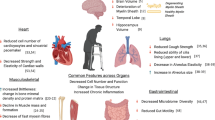3-Hydroxy-3-methylglutaryl coenzyme A reductase inhibitors (statins) along with their blood lipid-lowering effect exhibit anti-inflammatory and immunomodulatory activity. We studied the effects of long-term (72-h or longer) exposure of human T lymphocytes in culture to atorvastatin and rosuvastatin (5-80 nM) on their functional activity. Treatment with statins inhibited PHA/IL-2-induced proliferation of CD4+ T lymphocytes isolated from the peripheral blood of healthy donors. This was accompanied by a decrease in the relative content of cells expressing active caspase-3. Addition of mevalonate or fetal bovine serum simultaneously with statins restored proliferative activity of cells. Culturing of CD4+ T lymphocytes with statins in the presence of IL-2 did not significantly affect the expression of chemokine receptors CCR4, CCR5, CXCR3, and CXCR4. Pretreatment with statins suppressed spontaneous and SDF-1-stimulated migration of CD4+ T lymphocytes, but little changed the content of intracellular phosphorylated protein kinases Akt, p38 and p42/44 (ERK1/2). The cellular effects of “lipophilic” atorvastatin were observed at lower concentrations compared to “hydrophilic” rosuvastatin.
Similar content being viewed by others
References
Filatova AYu, Potekhina AV, Ruleva NYu, Radyukhina NV, Arefieva TI. The influence of atorvastatin and rosuvastatin in atherosclerosis on the parameters of cellular immunity and in vitro leucocyte activation. Ross. Kardiol. Zh. 2018;23(8):59- 64. doi: https://doi.org/10.15829/1560-4071-2018-8-59-64. Russian.
Arefieva TI, Filatova AY, Potekhina AV, Shchinova AM. Immunotropic effects and proposed mechanism of action for 3-hydroxy-3-methylglutaryl-coenzyme A reductase inhibitors (statins). Biochemistry (Mosc). 2018;83(8):874-889. doi: https://doi.org/10.1134/S0006297918080023
Bennaceur K, Atwill M, Al Zhrany N, Hoffmann J, Keavney B, Breault D, Richardson G, von Zglinicki T, Saretzki G, Spyridopoulos I. Atorvastatin induces T cell proliferation by a telomerase reverse transcriptase (TERT) mediated mechanism. Atherosclerosis. 2014;236(2):312-320. doi: https://doi.org/10.1016/j.atherosclerosis.2014.07.020
Cai A, Zhou Y, Li L. Rho-GTPase and atherosclerosis: pleiotropic effects of statins. J. Am. Heart Assoc. 2015;4(7):e002113. doi: https://doi.org/10.1161/JAHA.115.002113
Fong CW. Statins in therapy: understanding their hydrophilicity, lipophilicity, binding to 3-hydroxy-3-methylglutary- CoA reductase, ability to cross the blood brain barrier and metabolic stability based on electrostatic molecular orbital studies. Eur. J. Med. Chem. 2014;85:661-674. doi: https://doi.org/10.1016/j.ejmech.2014.08.037
Jameel A, Ooi KG, Jeffs NR, Galatowicz G, Lightman SL, Calder VL. Statin modulation of human T-cell proliferation, IL-1β and IL-17 production, and IFN-γ T cell expression: synergy with conventional immunosuppressive agents. Int. J. Inflam. 2013;2013:434586. doi: https://doi.org/10.1155/2013/434586
Li D, Li Y, Hernandez JA, Patenia R, Kim TK, Khalili J, Dougherty MC, Hanley PJ, Bollard CM, Komanduri KV, Hwu P, Champlin RE, Radvanyi LG, Molldrem JJ, Ma Q. Lovastatin inhibits T-cell proliferation while preserving the cytolytic function of EBV, CMV, and MART-1-specific CTLs. J. Immunother. 2010;33(9):975-982. doi: https://doi.org/10.1097/CJI.0b013e3181fb0486
Mausner-Fainberg K, Luboshits G, Mor A, Maysel-Auslender S, Rubinstein A, Keren G, George J. The effect of HMGCoA reductase inhibitors on naturally occurring CD4+CD25+ T cells. Atherosclerosis. 2008;197(2):829-839. doi: https://doi.org/10.1016/j.atherosclerosis.2007.07.031
Rodríguez-Perea AL, Montoya CJ, Olek S, Chougnet CA, Velilla PA. Statins increase the frequency of circulating CD4+ FOXP3+ regulatory T cells in healthy individuals. J. Immunol. Res. 2015;2015:762506. doi: https://doi.org/10.1155/2015/762506
Ruleva NY, Radyukhina NV, Zubkova ES, Filatova AY, Aref’eva TI. Inhibitors of 3-hydroxy-3-methylglutaryl coenzyme A reductase (statins) suppress differentiation and reduce LPS/IFNγ-induced cytokine production in human monocyte/ macrophage culture. Bull. Exp. Biol. Med. 2020;170(2):236- 240. doi: https://doi.org/10.1007/s10517-020-05042-x
Tang TT, Song Y, Ding YJ, Liao YH, Yu X, Du R, Xiao H, Yuan J, Zhou ZH, Liao MY, Yao R, Jevallee H, Shi GP, Cheng X. Atorvastatin upregulates regulatory T cells and reduces clinical disease activity in patients with rheumatoid arthritis. J. Lipid Res. 2011;52(5):1023-1032. doi: https://doi.org/10.1194/jlr.M010876
Vicente-Manzanares M, Cabrero JR, Rey M, Pérez-Martínez M, Ursa A, Itoh K, Sánchez-Madrid F. A role for the Rhop160 Rho coiled-coil kinase axis in the chemokine stromal cell-derived factor-1alpha-induced lymphocyte actomyosin and microtubular organization and chemotaxis. J. Immunol. 2002;168(1):400-410. doi: https://doi.org/10.4049/jimmunol.168.1.400
Waiczies S, Bendix I, Prozorovski T, Ratner M, Nazarenko I, Pfueller C. F, Brandt A. U, Herz J, Brocke S, Ullrich O, Zipp F. Geranylgeranylation but not GTP loading determines rho migratory function in T cells. J. Immunol. 2007;179(9):6024- 6032. doi: https://doi.org/10.4049/jimmunol.179.9.6024
Zhang D, Wang S, Guan Y, Wang L, Xie W, Li N, Zhao P, Su G. Effect of oral atorvastatin on CD4+CD25+ regulatory T cells, FoxP3expression, and prognosis in patients with STsegment elevated myocardial infarction before primary percutaneous coronary intervention. J. Cardiovasc. Pharmacol. 2011;57(5):536-541. doi: https://doi.org/10.1097/FJC.0b013e318211d016
Author information
Authors and Affiliations
Corresponding author
Additional information
Translated from Byulleten’ Eksperimental’noi Biologii i Meditsiny, Vol. 172, No. 8, pp. 162-167, August, 2021
Rights and permissions
About this article
Cite this article
Radyukhina, N.V., Ruleva, N.Y., Filatova, A.Y. et al. Inhibitors of 3-Hydroxy-3-Methylglutaryl Coenzyme A Reductase (Statins) Suppress Proliferation and Motility of Human CD4+ T Lymphocytes in Culture. Bull Exp Biol Med 172, 137–142 (2021). https://doi.org/10.1007/s10517-021-05350-w
Received:
Published:
Issue Date:
DOI: https://doi.org/10.1007/s10517-021-05350-w




